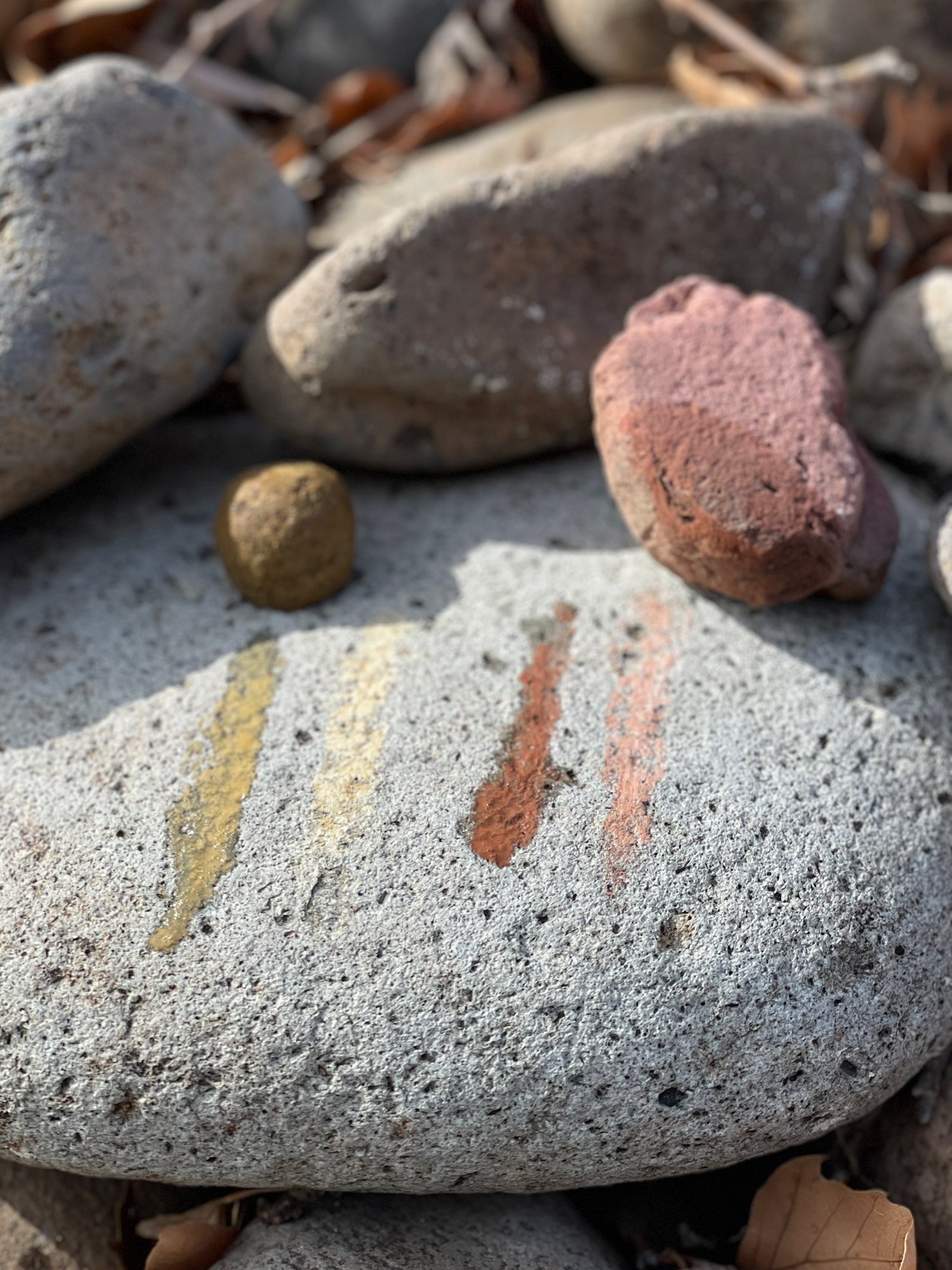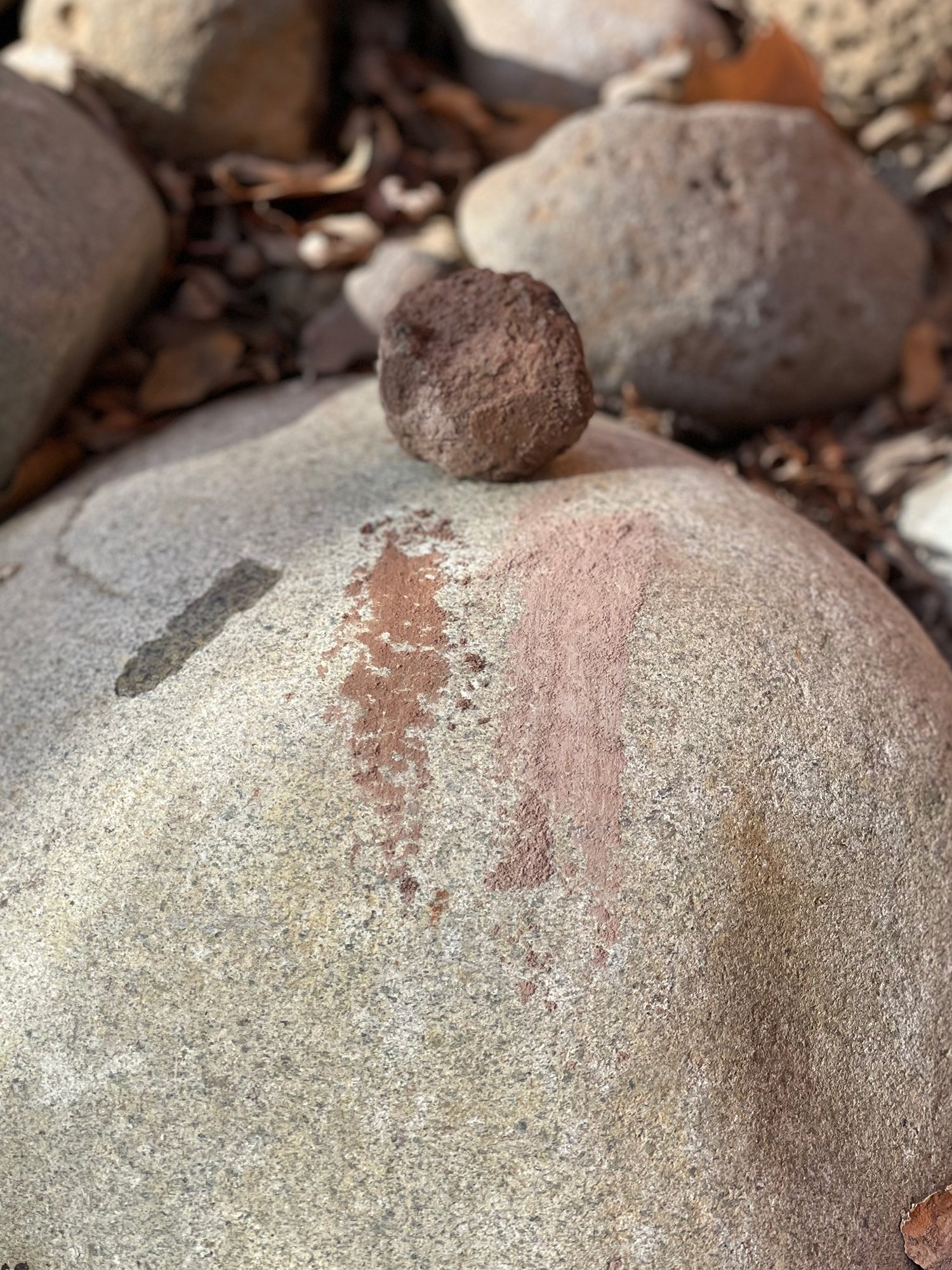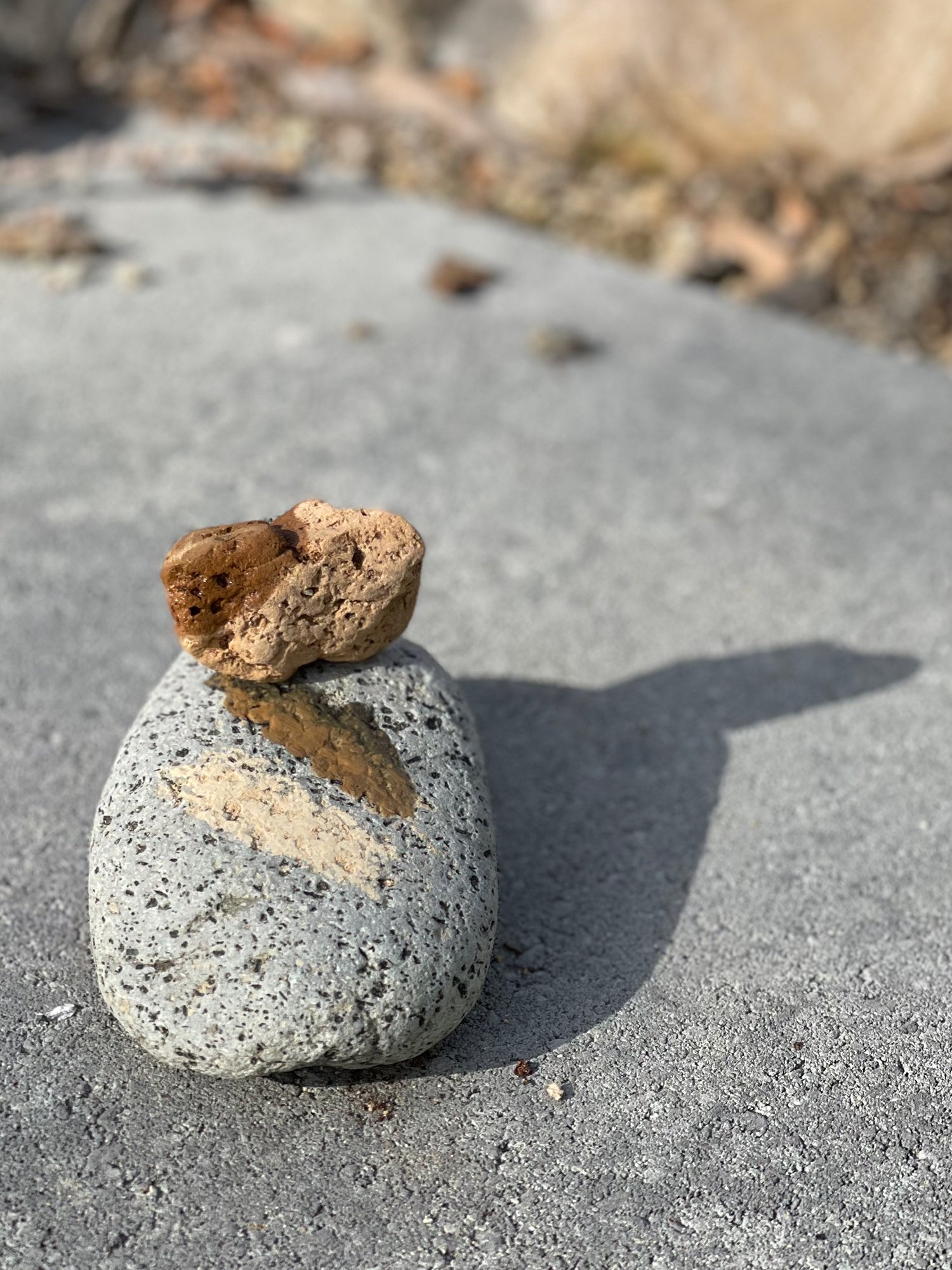Just scratching the surface
Look at these fantastic pigments I have in my own backyard!
Three of the images above show the results of scratch tests, simple experiments that involve rubbing one stone against another. Many rocks just scratch the other. Some yields wonderful colors. I performed dry and wet tests on each stone. The final image collects the six stones that yielded color.
A couple summers ago we removed our lawns (front and back) and planted a pollinator and drought-friendly garden. We also did some drainage work and installed rock borders and paths. It turns out that several—maybe many?—of those rocks hold beautiful pigments inside.
I started exploring these rocks as a part of the Being With Pigments workshop. A 6-month journey lead by Tilke Elkins of the Wild Pigment Project, the workshop is a guided meditation on our relationships with our local lands and an instructional adventure in discovering resident pigments in those lands. As someone who explores widely, I’m excited by the challenge of focusing locally for a while. Going in, however, I had no idea that “locally” might mean my own backyard, at least in the case of mineral pigments.*
Just last week I ordered seeds for dye plants that grow well in Northern Nevada. It has been part of my plan to grow flowers suitable for making botanical dyes this summer. (After a couple years struggling with vegetable gardens, I’ve decided to leave the veggies to the local farmers and sow my raised beds with flower seeds.) Now I’m daydreaming of a summer full of natural dyes and pigments foraged in my own backyard!
In the meantime I’m making inks with store-bought materials and plants gathered before winter set in. Also I’m experimenting with collage using those inks. I’m using inks made from avocado pits in my first trials, altering my process slightly to achieve different shades of pink and mauve. So far I like the results!
Swatches of rose petal ink in my ink making journal. Each swatch includes regions with 3, 2, and 1 layers of ink.
*Keeping it simple here, mineral pigrments come from rocks (or soils) and botanical dyes come from plants. Both can be used to make inks and paints, although the two behave differently when applied to paper. I’m starting to learn some of those differences…






